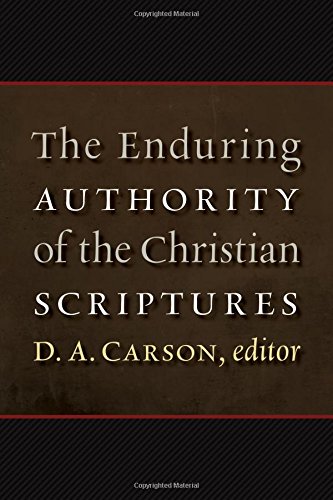A Brief Book Summary from Books At a Glance
Editor’s Note: Today we continue our series of “bonus” summaries covering all thirty-six chapters of the monumental volume, The Enduring Authority of the Christian Scriptures (D.A. Carson, ed.).
Chapter 35: Take, Read
by Daniel M. Doriani
(Summarized by Matthew Raley)
According to his Confessions, Augustine of Hippo heard a child’s voice chanting “Take, read, take, read,” as if God were responding to his despair and shame. Augustine read Romans 13:13-14, which was lying open, and began to follow Christ. His long road toward that turning-point, however, indicates that reading the Scriptures is not as simple as it might seem.
When pastors, scholars, and theologians study the Scriptures devotionally, Daniel Doriani says, they “must know that we are the objects of God’s study.” Professional Bible-readers can too easily read intellectually and not devotionally. We can become “recalcitrant readers.”
It is not a simple matter to read literature of any kind rightly, and the Bible offers unique difficulties. It can be read in many valid ways (“grammatically, historically, theocentrically,” etc.), and “takes direct and sustained interest in guiding the people who read it.” Doriani notes that Jesus “chides the Jewish leaders for misreading Scripture” on five occasions. Scripture directs us to discover its great themes, such as the redemption of all nations, and also directs us to appropriate those themes personally.
Thus, Christian teachers have formidable interpretive challenges when they study the Bible, challenges that must be met with technical skill. They also have challenges reading the world in light of Scripture. Doriani argues that the way to avoid reading Scripture “professionally,” without devotional profit, is to follow the ancient lectio divina: read, meditate on, pray, and live the text. “This ancient approach stands in contrast to a view, favored for decades by certain Protestants, that segregates exegesis from . . . the text’s current meaning (or ‘application’) and the disciple’s commitment to live the text.” In practice this segregation breaks down. Scripture even links exegesis and application, as when Jesus rebukes the Jewish leaders for failing to read, know, or understand Scripture, while we might say they failed to apply it (e.g. Matt. 12:1-8).
A distinction between Scripture’s meaning and implications is important. But theologians such as John Calvin maintained a seamless transition between the two. Reading skillfully should lead to meditation, entering the world of the text, as another step of. . .
[To continue reading this summary, please see below....]The remainder of this article is premium content. Become a member to continue reading.
Already have an account? Sign In
